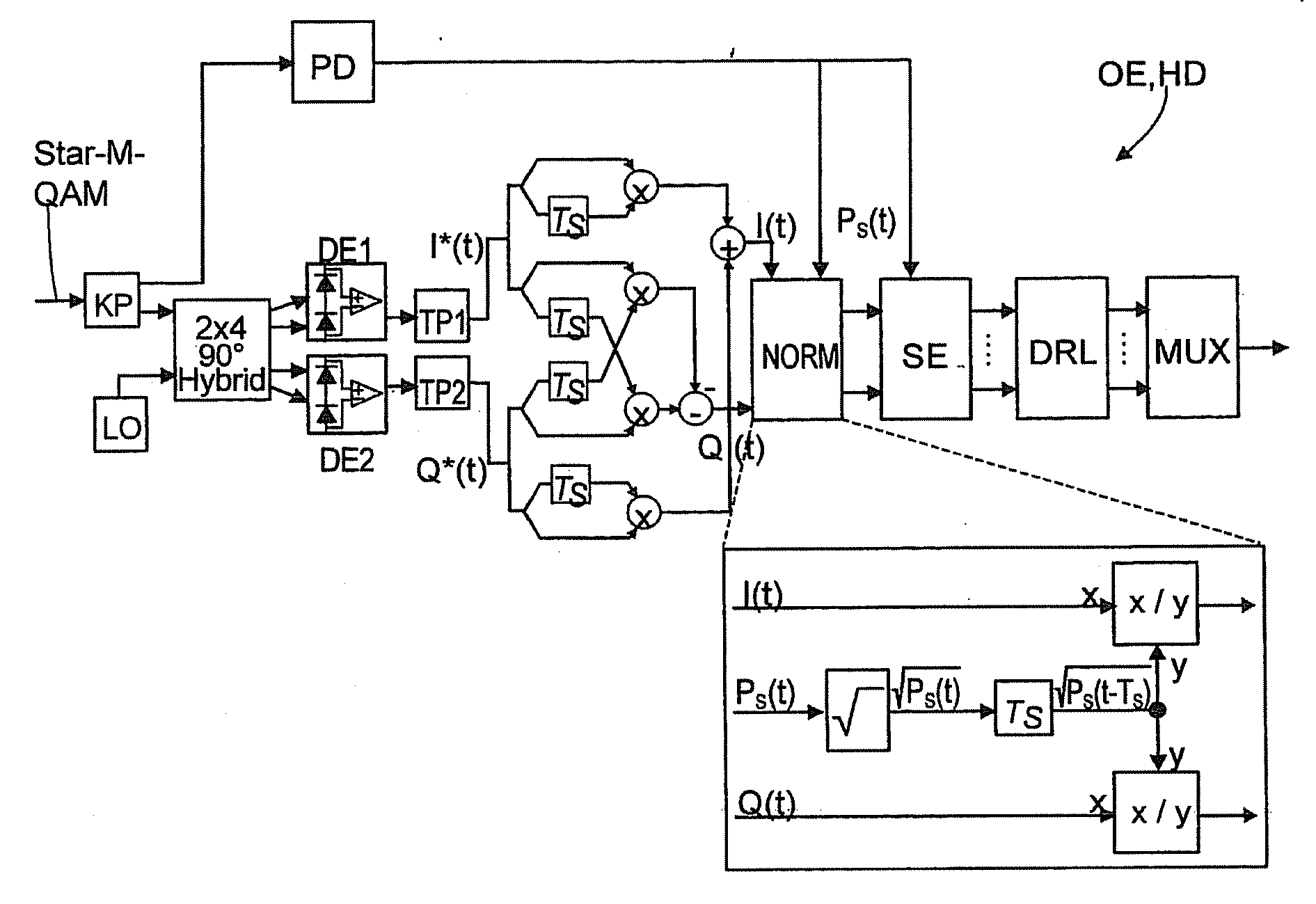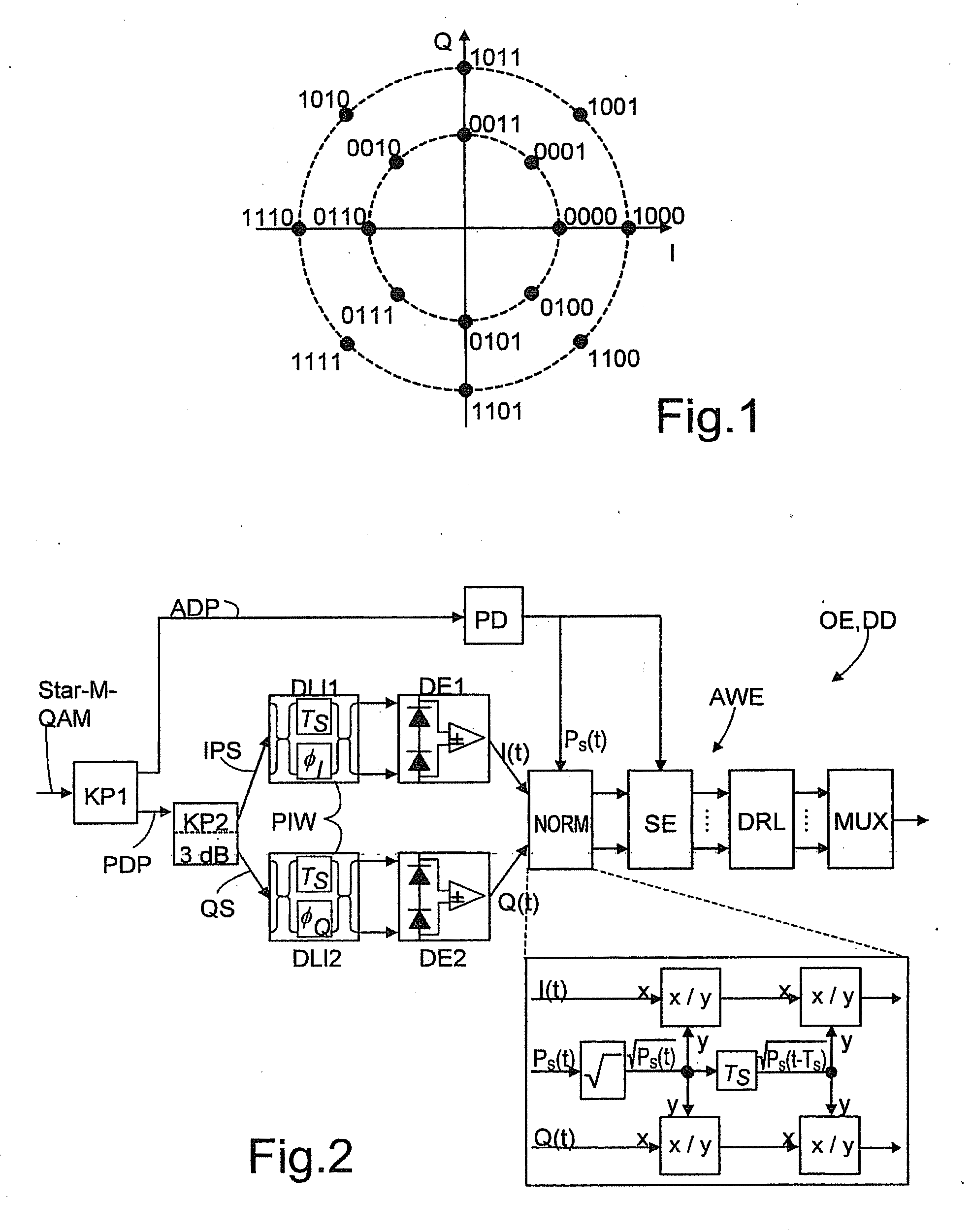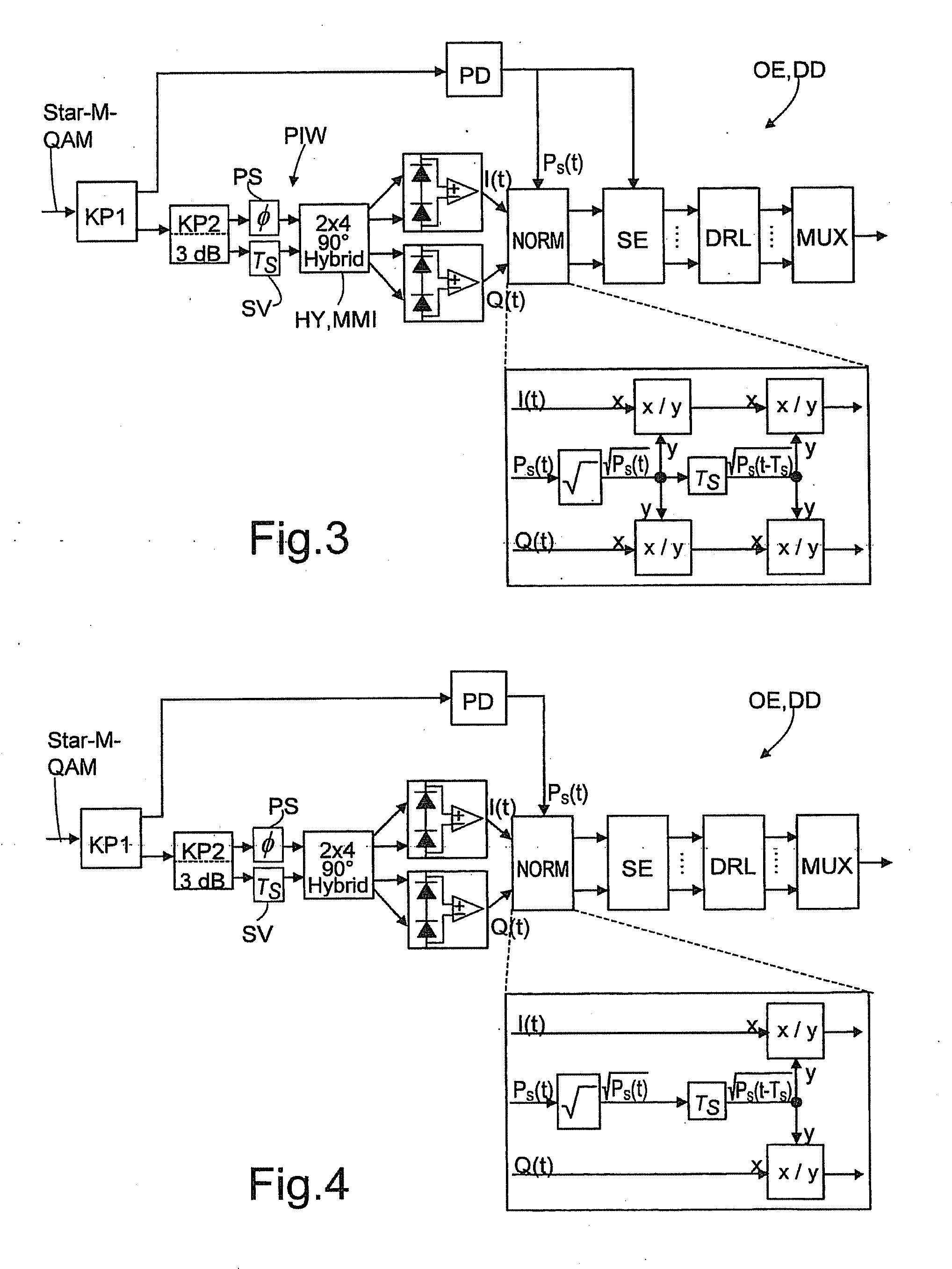Optical Receiver For Receiving A Signal With M-Valued Quadrature Amplitude Modulation With Differential Phase Coding And Application Of Same
a technology of optical receiver and optical data, applied in electromagnetic receivers, electromagnetic transmission, multiple carrier systems, etc., can solve the problems of heterodyne reception disadvantages, high data rate, wdm and high data ra
- Summary
- Abstract
- Description
- Claims
- Application Information
AI Technical Summary
Benefits of technology
Problems solved by technology
Method used
Image
Examples
Embodiment Construction
[0049]FIG. 1 shows a constellation diagram of a 16QAM with eight phase states. Data signals coded by such a higher-valued modulation method (M=number of symbols=8) can readily be received and decoded without any problems for the first time by means of the optical receiver according to the invention.
[0050]FIG. 2 shows the optical receiver OE according to the invention in the embodiment of an optical direct receiver DD. The received data signal Star-M QAM is split between an amplitude detection path ADP and a phase detection path PDP by means of a first optical coupler KP1. The amplitude detection path ADP contains a photodiode PD, which detects the incoming optical data signal and converts the amplitude or intensity thereof into a corresponding electric current. Arranged in the phase detection path PDP is a second optical coupler KP2 (with a uniform 3 dB signal splitting in the exemplary embodiment shown), which splits the received data signal between an in-phase signal path IPS and ...
PUM
 Login to View More
Login to View More Abstract
Description
Claims
Application Information
 Login to View More
Login to View More - R&D
- Intellectual Property
- Life Sciences
- Materials
- Tech Scout
- Unparalleled Data Quality
- Higher Quality Content
- 60% Fewer Hallucinations
Browse by: Latest US Patents, China's latest patents, Technical Efficacy Thesaurus, Application Domain, Technology Topic, Popular Technical Reports.
© 2025 PatSnap. All rights reserved.Legal|Privacy policy|Modern Slavery Act Transparency Statement|Sitemap|About US| Contact US: help@patsnap.com



